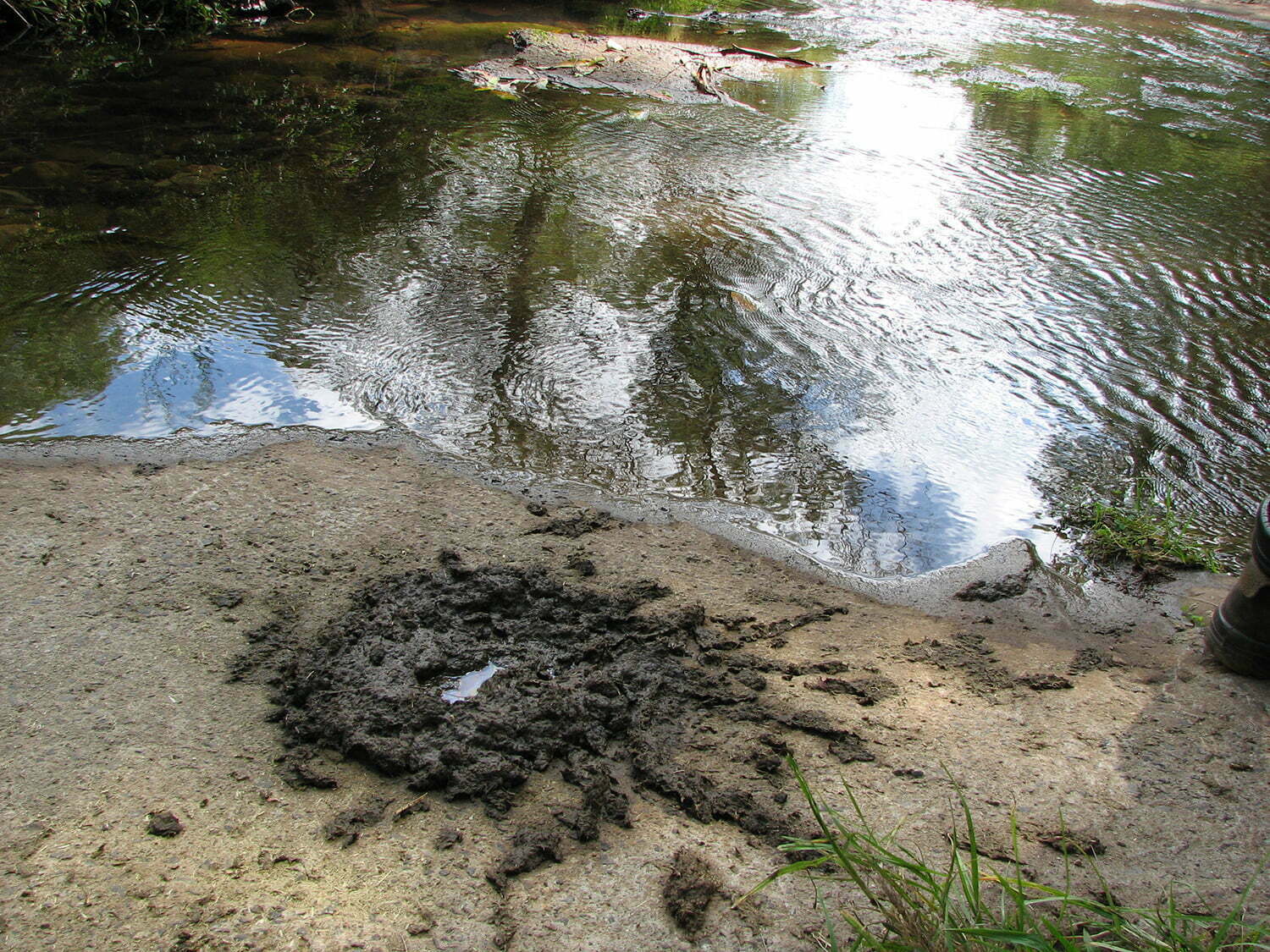If you happen to be having your morning coffee or afternoon tea, we’re sorry. It’s really not a nice visual when you’re enjoying a cuppa.
But… the facts are true!
Research conducted in England, in a paper entitled ‘Temperature-driven river utilisation and preferential defecation by cattle in an English chalk stream‘, has shown that cattle standing in water ‘pooed’ five times more than their average defecation frequency. Given how much warmer it is in Australia, we suspect cows with access to streams spend even more time in streams, creeks and dams than they do in England. It seems cows enjoy standing in water and relaxing, for hours at a time – which means a lot of poo and urine going into the water.

According to the paper:

Prolonged, unlimited access can not only destroy fish habitat but also reduce pond volume and negatively impact animal performance.
Yikes.
It seems allowing cattle to loaf around in the pond while getting a drink is neither good for the cows nor the body of water. Dirk Phillipp, an associate professor of animal science from the University of Arkansas, says:

Cow hoof affected by foot rot from standing in water.
Phillipp notes that cattle drinking tainted water can ingest both parasites and pathogens that can lead to disease. Foremost among the related ailments is leptospirosis, an infectious bacterial disease. Fever, malnourishment, anorexia and possible calf abortion are all possible symptoms from drinking bacteria-contaminated water, Parasitic trematodes, or liver flukes, can also cause liver damage and lower fertility. Coccidiosis, caused by a protozoan parasite, may cause acute diarrhea, weight loss and even death.
Troubles don’t end with issues of tainted water. Standing in a pond for extended lengths of time can soften a cow’s hooves, which can lead to injury or disease. Foot rot is a common problem of lingering livestock. Softened hooves are easily damaged, leading to cracks and crevices that can serve as an entry point for pathogens such as fusobacteria1.
The link between water quality and farm profitability
There are also implications of poor quality and animal productivity. Water is a nutrient, and just like feed, the nutritional value varies depending on overall quality. Many factors can affect how much water a cow consumes, including lactation, movement, and environmental temperatures. Water quality impacts the palatability of water and can also cause cattle to drink less. This leads to reduced feed consumption and less weight gained.
Even if something in the water is just slightly off, it can lower how much water animals consume. Cattle will avoid water contaminated even with as little as 0.005 percent manure by weight. A Saskatchewan study found even though there was no significant difference in water chemistry between two water sources, steers and calves drinking from a trough had a 9 to 10 percent higher weight gain compared to those drinking from a dam. It is thought that the aeration that occurs when water is pumped to a trough increases the palatability for stock2.
Additionally, cattle that have access to clean, aerated water spend more time grazing and less time resting than those drinking from farm dams. The bottom line is that even a well-maintained dam rarely compares to water pumped into a trough. Troughed water is cleaner and more palatable to cattle, and encourages higher consumption of dry matter. Additionally, cattle conserve energy if they do not have to travel far to access water.

Stock degrade waterways
Losses only begin with decreased herd performance. Over time, cattle with unrestricted access will destroy the pond, river or stream. Cow hooves ‘pug’ around the edge of the river or pond, leading to erosion and a lot of muddying along the shoreline. This causes water quality issues, as well as the waterway silting up, destroying fish habitat, instream and riverbank ecosystems.

Managing stock access to water
Cattle favour riparian environments when it’s warm because it is the place on -farm that is coolest, whether in or out of the water. This is where fencing and crossings can really play a role in good waterway management.

It is possible for stock to get the benefit of cooling from the riparian zone, but from the other side of a fence. In the same way evaporative cooling works, we can plant shelter strips that enable cattle to stand near, but not in riparian areas, and still get the benefit of those cooler breezes coming off the water. In the photo above the process of restoration has begun, with a crossing in place, the cattle fenced out, and planting around the waterway about to start.
In the photo below we can see a waterway that has been planted out and is enabling stock to get the benefits of shelter, shade and evaporative cooling.

So the ‘bottom line’ (pardon the pun) is that managing stock around waterways results in healthier animals, higher productivity, and waterways that are able to thrive. The further good news is that programs like Rivers of Carbon support landholders wanting to do this work on their farms. To find out more why not come along to our upcoming webinar on managing stock and waterways or visit our Stock and Waterways website that is packed full of information about this important issue..

UPCOMING WEBINAR
Stock and Waterways
Date: 11th December, 11.30am-12.30pm
In this webinar our Rivers of Carbon Program Manager, Lori Gould, will cover all the practical considerations of managing stock around waterways, including everything from fencing, installation of alternative stock water, stock crossings, revegetation and control of pest plants.


